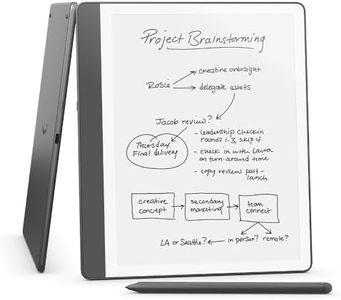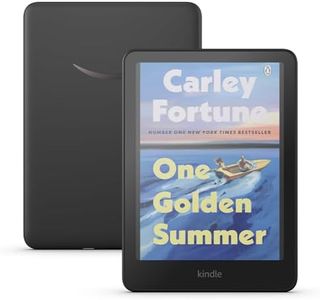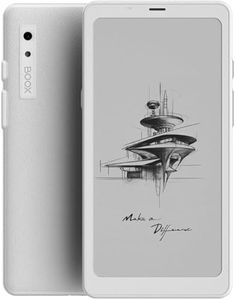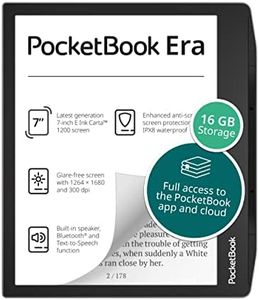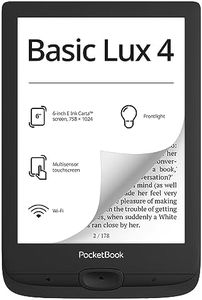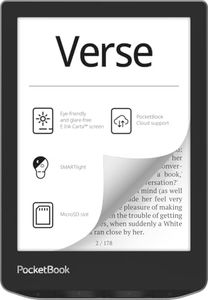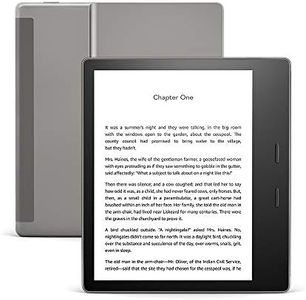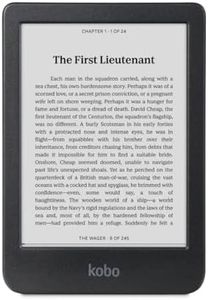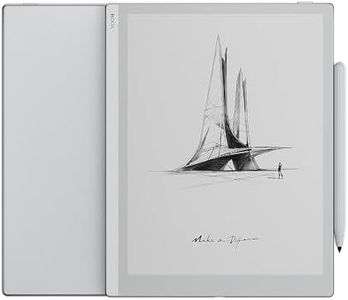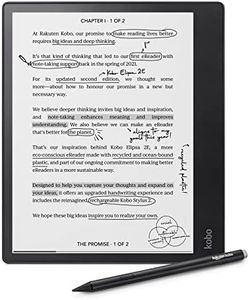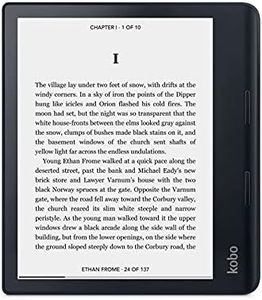We Use CookiesWe use cookies to enhance the security, performance,
functionality and for analytical and promotional activities. By continuing to browse this site you
are agreeing to our privacy policy
10 Best E Reader
From leading brands and best sellers available on the web.Buying Guide for the Best E Reader
Choosing an e-reader can truly enhance your reading experience, giving you portability and comfort that's hard to beat with physical books. The key is to think about how, where, and what you like to read. By understanding the most important features of e-readers, you'll be able to find the one that best fits your reading habits and lifestyle.Screen SizeScreen size refers to the diagonal measurement of the display, usually given in inches. The size of the e-reader's screen determines how much text fits on the page and how easily you can hold the device. Smaller screens, around 6 inches, are lightweight and easy to handle with one hand, making them great for reading on the go. Larger screens, 7 to 8 inches or more, show more text and are especially appreciated when reading comics, PDFs, or for people who prefer larger text. Choosing the right size depends on your comfort: If you read mostly novels and travel a lot, a smaller screen may be perfect. If you read reference books or need bigger text, a larger display might be more suitable.
Screen Type (E Ink vs. LCD)E Ink screens mimic the look of paper and are easy on the eyes, even during long reading sessions or under bright sunlight. LCD screens, on the other hand, are similar to tablets and let you read in color, but can cause more eye strain and are harder to see in sunlight. If you read for long periods or mostly outdoors, E Ink is a better choice. If you want to view colorful magazines or animated content, you might lean towards an LCD screen, but remember it could be heavier and use more battery.
Front LightA front light is built into the e-reader to illuminate the screen so you can read in low light or darkness without needing an external lamp. Some e-readers offer adjustable brightness and even color temperature to make nighttime reading gentler on your eyes. If you often read at night, on planes, or in dimly lit places, having a front light is highly convenient. If you mostly read during the day or in well-lit rooms, this feature might be less important.
Battery LifeBattery life tells you how long the device will last between charges. E-readers with E Ink screens generally offer weeks of battery life, while those with LCD screens might last only a few days. If you travel a lot or don’t want to worry about charging often, look for one with long battery life. If you only read occasionally, battery life may not be a top priority.
Storage CapacityStorage capacity measures how many books or files you can keep on your device, typically shown in gigabytes (GB). Most e-books are small files, so even modest storage lets you carry thousands of books. If you plan to store a lot of comics, audiobooks, or PDF files, bigger storage can be helpful. For just regular novels and light reading, a lower capacity should be enough.
Water ResistanceWater resistance means the e-reader can survive accidental splashes or even being dropped into water for a short time. If you like reading by the pool, at the beach, or in the bath, a water-resistant model gives an extra layer of peace of mind. If you mostly read indoors, this feature may not make a difference.
Connectivity (Wi-Fi/Cellular)Connectivity options decide how you download new books or sync your reading progress. Wi-Fi is common on most e-readers and is perfect if you have regular access to a home or public network. Some devices offer cellular connectivity for downloading books wherever you have mobile signal, useful if you rarely have Wi-Fi access. For most people, Wi-Fi alone is more than enough for regular use.
Format and Store SupportDifferent e-readers support different types of book file formats and may be tied to specific online bookstores or allow sideloading of files from elsewhere. If you already have a library of e-books in a certain format, or you want to use many library or free sources, check what file types the device can open easily. For those who plan to borrow e-books from libraries or want flexibility, wider format support is helpful.

